Kia’s infotainment software is fast and responsive, befitting the EV9’s modern displays. Wireless CarPlay and Android Auto support also makes it easy to connect your phone without having to deal with cables. The EV9 has a large wireless charging pad that should fit my iPhone 15 Pro Max perfectly, and there’s enough room to fit even larger phones. It was a bit tricky to find the right wireless charging zone, so much so that it made me wish Kia had implemented MagSafe or the new Qi2 standard to keep my phone in place. I’d recommend always keeping a USB-C cable handy to take advantage of the EV9’s fast-charging port.
I was impressed with the GT-Line EV9's 14-speaker Meridian system, which has enough bass punch (thanks to an open-air subwoofer) for music and precise clarity for voices when listening to podcasts and audiobooks. Meridian says Its DSP (digital sound processing) optimizes the sound for the EV9's cabin and also upmixes the audio for 5.1 surround sound (or the equivalent with many more speakers).
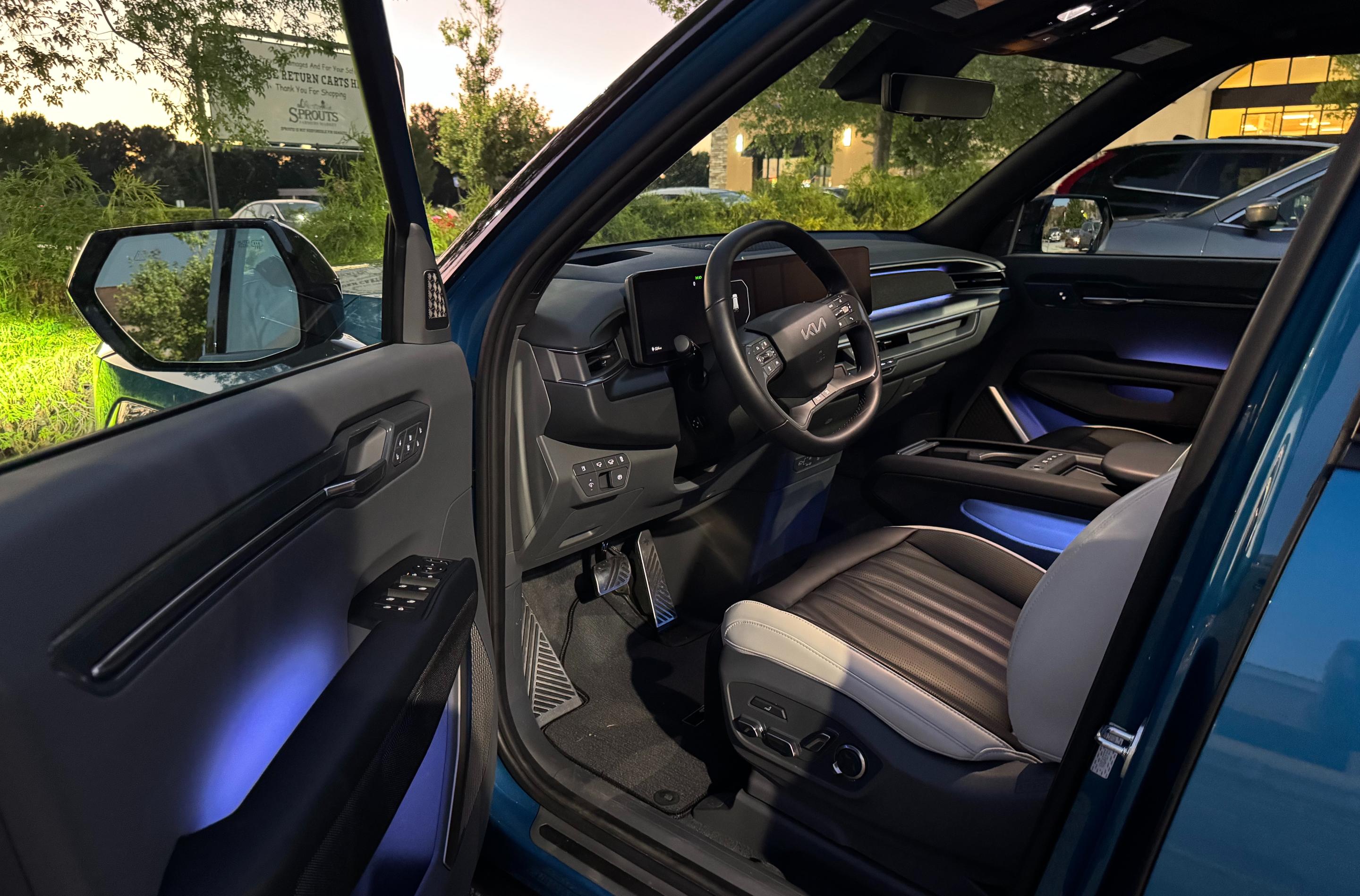
The company’s Intelli-Q equalization system also transforms the audio as the noise in the EV9’s cabin changes: Instead of just raising or lowering the volume, it can emphasize specific frequency ranges to cover up something like tire noise. In my testing, the Meridian system sounded great during both loud highway driving and relaxed local commutes. I definitely noticed when the Intelli-Q software kicked in, but it wasn’t unbearable like older cars that simply got louder on the highway. (You can also adjust the level of automatic sound equalization, and audio purists can turn it off entirely.)
The EV9's second-row captain's chairs are just as comfortable as the front seats, but they have padded headrests instead of flexible mesh. As much as I like the second row, though, my family would probably be better off with the 7-seat layout of the EV9 Light or Wind models. These feature one bench seat instead of two captain's chairs, which is what my wife prefers when she needs to ride next to my two-year-old son.
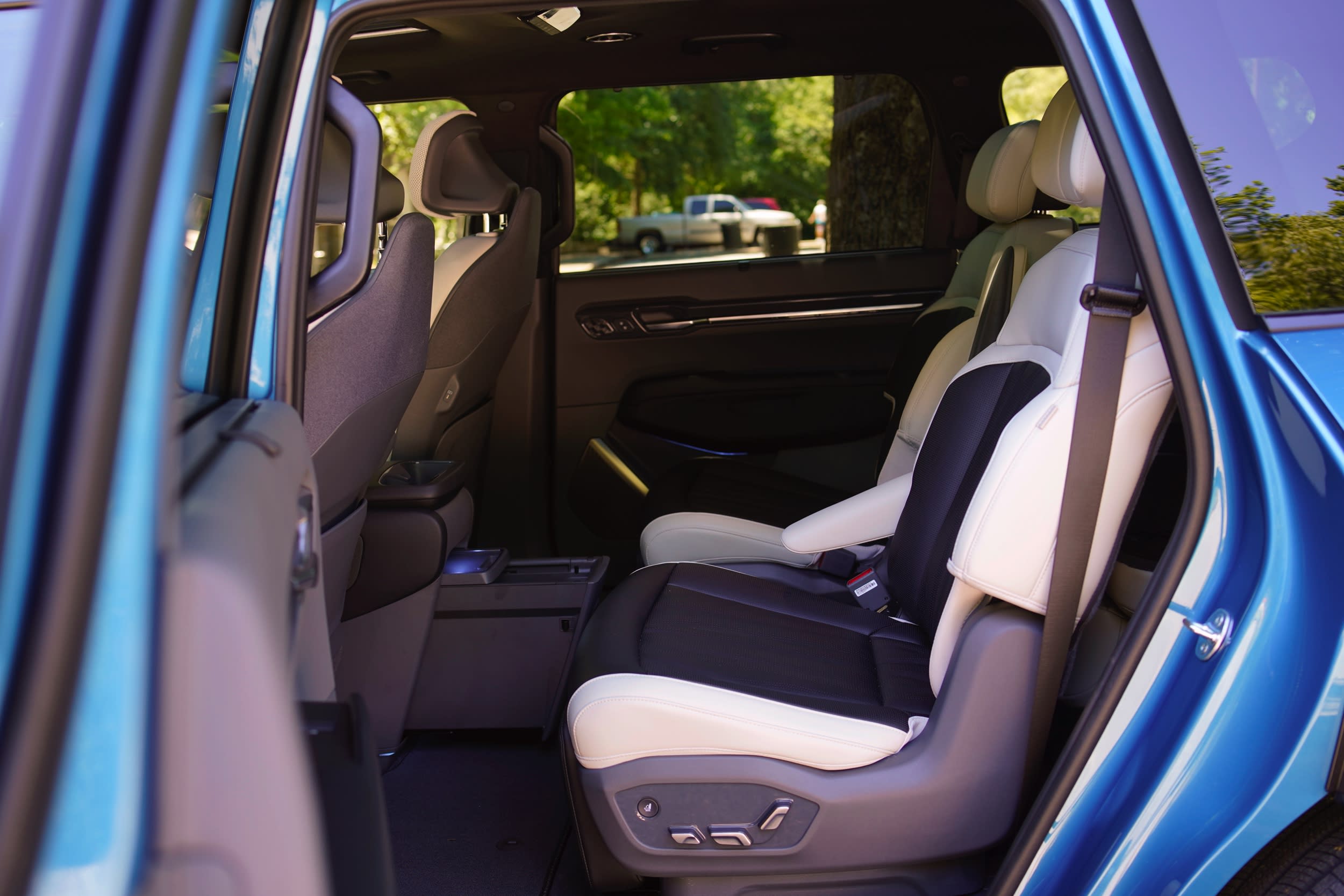

The EV9’s third-row seats are also comfortable, but as in many three-row SUVs, most adults won’t have much legroom. I was able to squeeze in with my 5-foot-8 frame, but I wouldn’t say the experience was ideal. Anyone riding in the back row of the EV9 will likely have to negotiate with the person in front of them for some legroom. It’s also worth noting that the second row is unremovable with child seats, as they block the seat belts. So make sure you have the second row in a comfortable spot for rear passengers. before Connecting child seats.
Unfortunately, the American version of the The EV9 will not have second-row seats that can rotate 180 degrees to face the third row, because they don’t meet federal safety standards. That feature, which was a major part of Kia’s initial EV9 marketing campaign, will be available in South Korea and other countries.
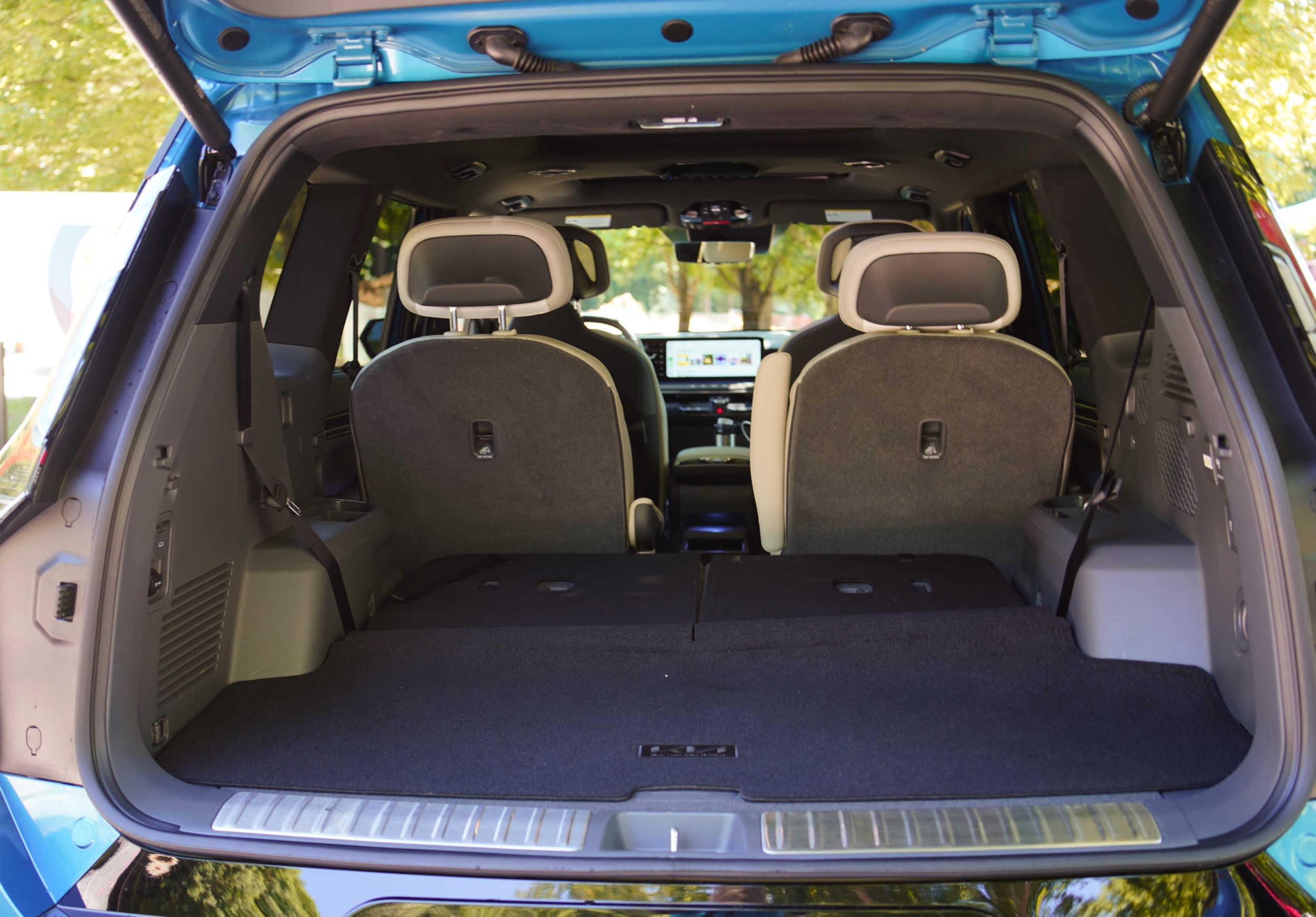

For cargo, the EV9 has 20.2 cubic feet behind its third-row seats, and a more usable 43.5 cubic feet of storage when the third row is folded down. If you push down the second-row seats, too, you can fit up to 81.7 cubic feet of gear. There’s also a front trunk, or frunk, under the hood, but it’s not as useful as some other EVs. It can hold 3.2 cubic feet in the rear-drive EV9, and an even tinier 1.8 cubic feet in all-wheel-drive models. In both cases, you have enough room to stash Kia’s Level 1 charging cable and a few other small items.
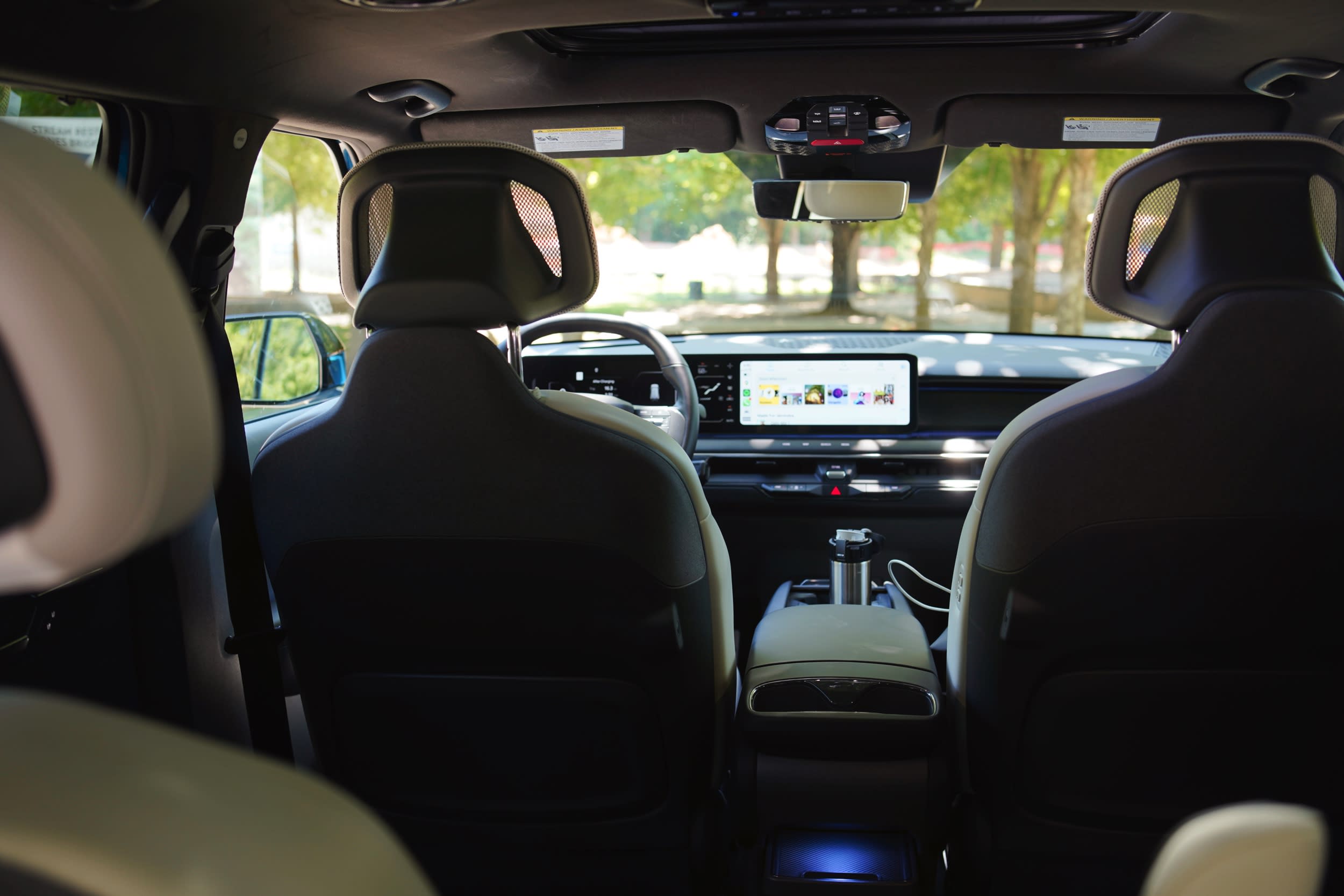

Driving
On the road, the EV9 feels like a paradox. Like Rivian’s R1S, it’s a large SUV that’s surprisingly quick and agile for its size. I was able to effortlessly weave through local traffic, quickly pull away from stoplights, and pass cars on the highway with ease. It wasn’t as easy to maneuver as my 2019 Volvo XC90, but I was still impressed because the EV9 is a much more square car.
After visiting my parents’ house — a 45-mile road trip each way — the EV9 dropped from 80 percent charge to 52 percent. The air conditioning was running full blast to combat the Georgia heat and humidity, so that range seemed adequate. Just keep in mind that an EV’s estimated mileage can easily change based on air conditioning use, outside temperatures, and the speed at which you’re driving.
My wife, who hasn't spent much time in electric vehicles, noted that she didn't feel like she was actually driving while behind the wheel of the EV9. On well-paved roads, it rides smoothly and without much noticeable noise. It took my wife some time to get used to the EV9's delicate brakes (it's easy to slam the vehicle to a stop), but that's something I've noticed in many electric vehicles. You can use the EV9's paddle shifters to adjust regenerative braking, which puts some energy back into the battery and doesn't use the car's traditional brake pads.
At its most extreme, the EV9's regenerative braking allows for one-pedal driving, allowing the vehicle to come to a complete stop simply by lifting your foot off the accelerator. It's an odd feature to get used to if you've only ever driven gas-powered cars, but it's one of those things that EV owners quickly learn to love.
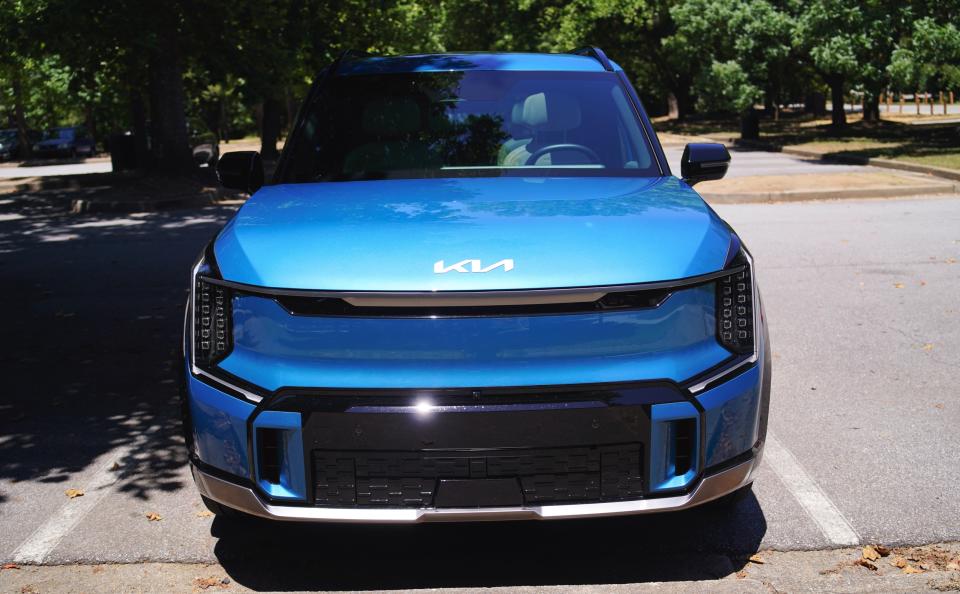

It would be nice if Kia offered adaptive suspension on the EV9, as you can feel the impact of rough roads and large potholes all too easily. For a car that costs close to $80,000, like our GT Line tester, a smarter, softer suspension should at least be an option. Without it, the EV9 doesn't feel as plush as the Rivian R1S as driving conditions worsen.
I didn't have much trouble parking the EV9 in most parking lots, but reversing out of spaces could sometimes be a pain. That was particularly true in spots designed for smaller cars—I'm talking about you, Trader Joe's. It took me six rounds of reversing and precarious turns to get out of a spot at my local Regal Cinema. Even then, I could only get out in one direction, thanks to a number of other large cars (including one particularly ugly Cybertruck) parked around me.
Thankfully, the EV9's high-resolution cameras, proximity sensors, and overhead 360-degree camera (on the GT line only) helped me get out of tight spots. But even with those aids, it was still more annoying than the rugged Pacifica hybrid minivan I owned before.
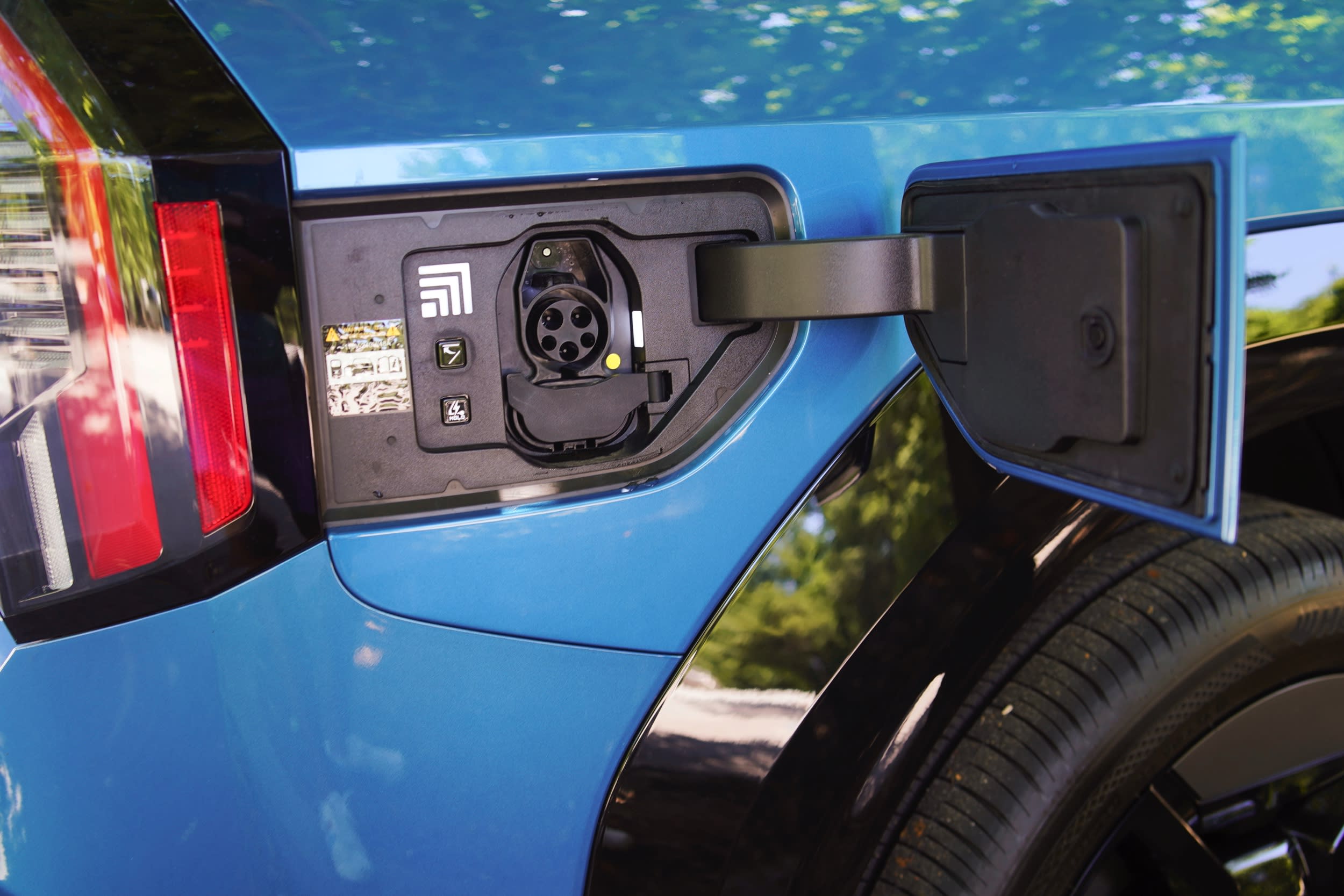

Charging
The Kia EV9 supports 210-kilowatt fast charging and is compatible with both 400- and 800-volt chargers. Using the more powerful 800V hardware (which, by the way, isn’t always easy to find), the EV9 can charge from 10 to 80 percent in 24 minutes. Using a local Electrify America charger, which registered 150 kW, the EV9 went from 21 percent battery to 90 percent in 39 minutes.
I don’t have a Level 2 charger at home, which could fully charge the EV9 in six or seven hours, but I was able to plug it into a Level 1 charger using a standard 120V outlet overnight. That typically added an additional 10 to 15 percent charge after eight to 10 hours. This level of charging may not be feasible in the long term, but it’s helpful if you don’t have the ability to add a Level 2 system at home or if you’re on the road and need to add a little more power to get to the next fast charger.
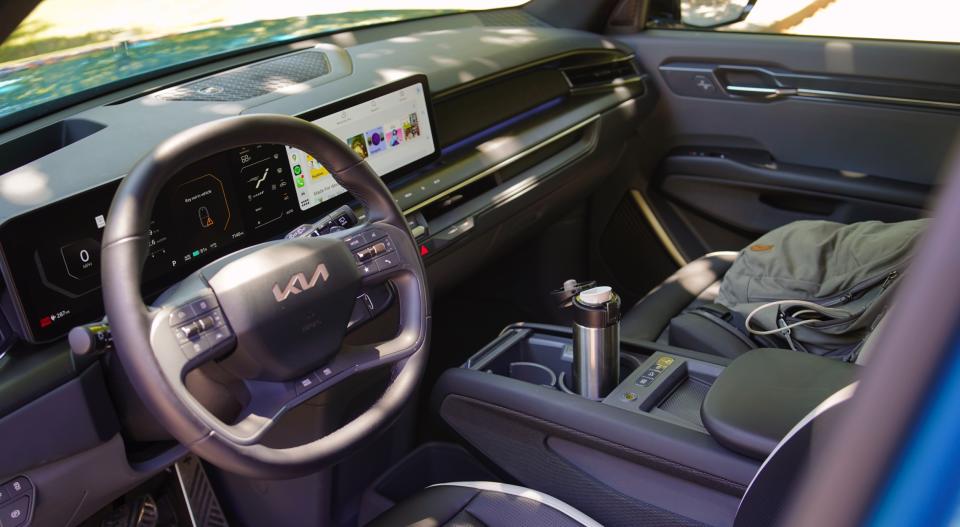

Prices and competition
The Kia EV9 starts at $54,900 (not including destination charges) for the “Light” model, which includes rear-wheel drive, 215 horsepower, and 230 miles of range. Leasing options start at $487 per month on averagewith a $2,000 payment due at signing for a 36-month period. These figures could also change depending on offers Kia makes available, as well as what local dealers are willing to charge.
The “Light Long Range” model includes a larger battery with 304 miles of range for $59,200 and a slightly weaker 201-hp motor. Higher-end models are nearly twice as fast with 379-hp all-wheel-drive motors. That includes the $63,900 “Wind” EV9 model and the $69,900 “Land” model, both with 280 miles of range.
At the top end is the flagship GT-Line model we reviewed, which starts at $73,900. It has a little less range (270 miles) than midrange options, but it also has almost all the features Kia could include, including a 12-inch head-up display on the windshield, 21-inch alloy wheels, and the 14-speaker Meridien sound system.
While its price is rising quickly, the EV9 is still a better choice than any other three-row EV on the market. The Rivian R1S starts at $75,900 and currently leases for $699 a month with at least $8,500 in signing fees. The older Tesla Model x starts at $77,990. Both cars are also significantly quicker than the EV9 and offer better handling options, such as adaptive suspension.
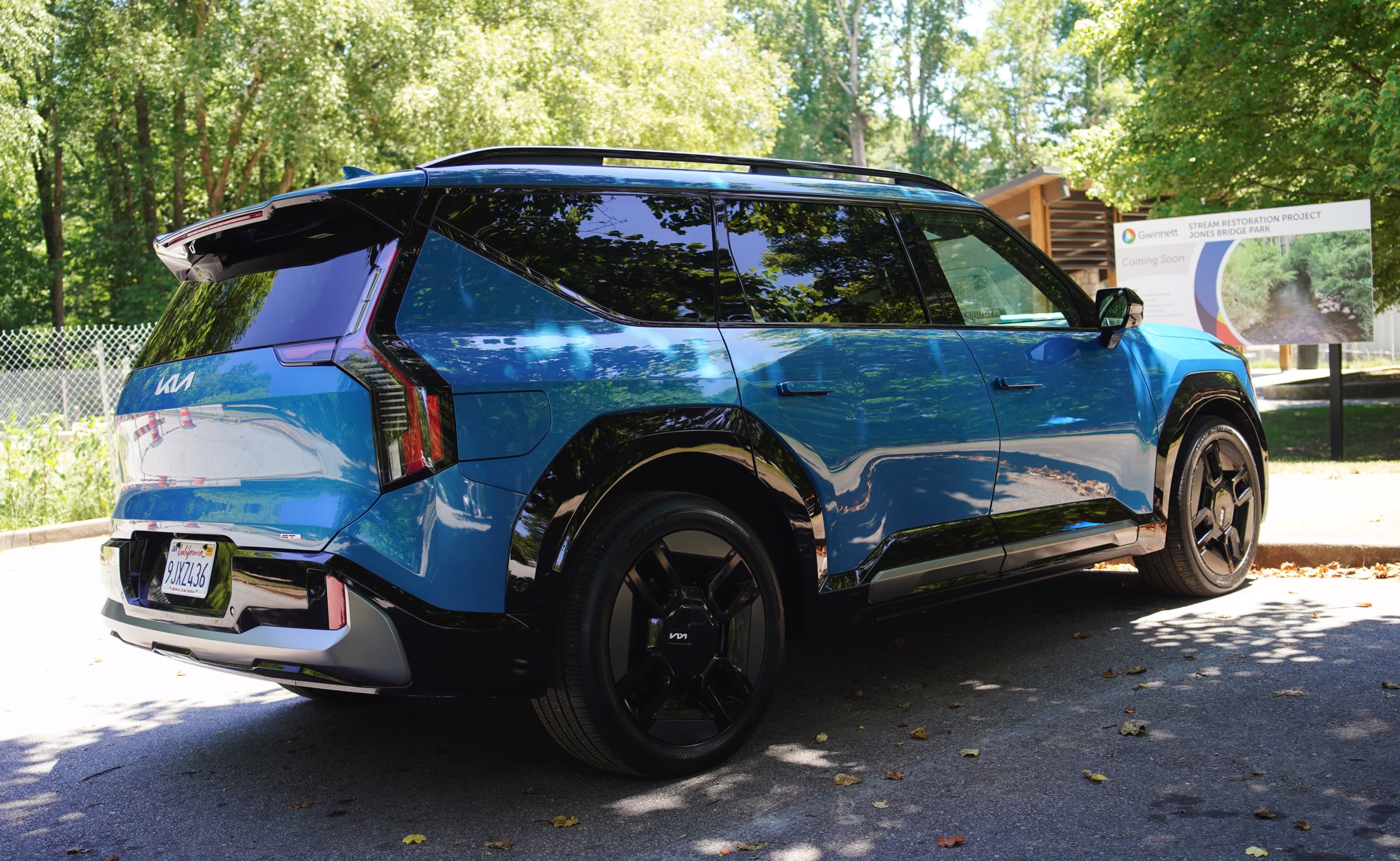

Wrap
After looking forward to the perfect family EV for years (after my experience with the Rav4 hybrid, Sienna hybrid, and Chrysler Pacifica plug-in hybrid), I’m surprised it’s coming from Kia and not a more established brand like Toyota. The EV9 is spacious, more affordable than other EVs, and drives (mostly) like a dream. It charges quickly, and most models have more than enough range to handle the occasional road trip. Simply put, the Kia EV9 is everything I’ve been looking for in a three-row family EV.






